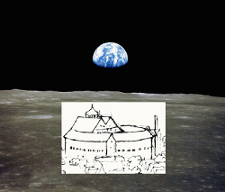Papyrus, cuneiform, rice paper, vellum
February 23, 2009
Papyrus, cuneiform clay tablets, rice paper, palm leaves, tree bark, vellum, deer skin, decorative gilt leather, chiseled marble, copper plates, silk scrolls for fastidious delectation, and so on. Electrons, ebooks, will find their role and level.
One thing all these FORMS of reading demonstrate is that the nature and experience of reading has through the centuries assumed numerous physical shapes. Not everyone will want to make the transition, and not for every type of book. Literary and artistic, cultural works, especially, will continue to preserve and honor, at times, the exceptional qualities of high weight and exotic papers. Under all the Forms, Platonic, the experience of the Archetype, the Idea, if you will, prevails and will continue… in the mind of a human being.
Those who worry about the demise of the book should take heart from history. But why waste so many trees on manuals, pulp fiction, the required textbooks that the overburdened backs of school children lug around, unread — and the ephemeral newspapers that more and more people read online?
Call me old fashioned and nostalgic, but I hope we’ll always hold some books worthy of time-honored paper, linen, and vellum, as an art form, in its own right, if nothing else.




From eReading. Submitted on 2010/09/23 at 2:54 am
Dear Sir,
Thank you for this post. I like the idea of relating Plato’s Forms to the act of reading. I got an insight from your short post. Previously I only looked at it from the evolutionary perspective and thought that we are constantly making improvement upon the art and science of reading. The digital medium I find the most advanced in that it is multidimensional and perhaps web and internet technologies are at their infancy. We cannot predict what they will be when they become mature.
I would love to know your comment on this.
From eReading. Submitted on 2010/11/02 at 1:16 pm
Sorry again for a very tardy response!
I can’t immediately recall the name of the Indian dynasty that used the mentioned “copper plates” to record its documents on, but it was south of Madras, a very famous religious site too. So India has definitely had this experience already.
I recall too that parts of India used deer skin at some period or another for writing. Was it Khaldasa, Valmiki, or Vyasa? Some classic poet I read about somewhere…
As Plato might have understood, a physical book is merely the codification of thought and feeling; the true Book resides in the Empyreum.